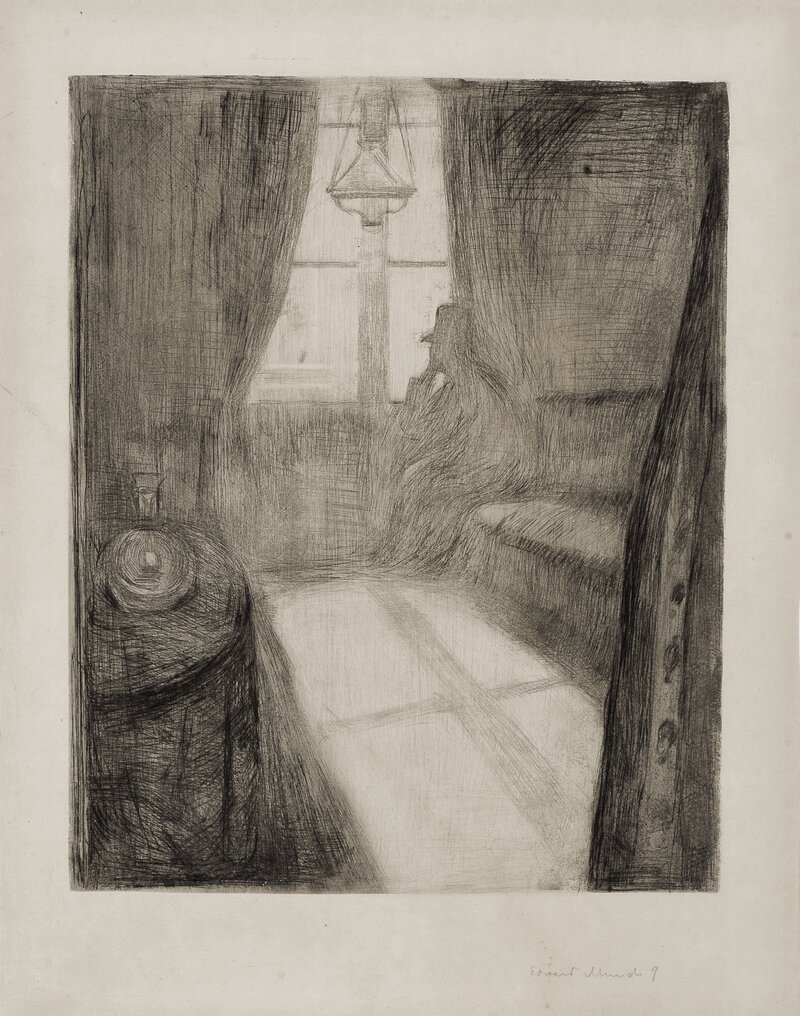LITERATURE: Gerd Woll: Edvard Munch 1895 first year as a graphic artist, exhibition catalogue Munch Museum 1995.
A.J. Meier-Graefe writes in general terms about art in his introductory booklet to the portfolio with the 8 prints by Edvard Munch of 1895, but some of the subjects he comments upon:
Munch has a predilection for employing his talent for solving problems of light as a means to express his imagination – I am here again concerned with the engravings, of course! – A pure study of nature lies behind “The Rising Moon”, a beautiful, lyrical painting. The moon is shining outside, casting a pale light into the room. A man is sitting at the window, grey in grey, a small piece of twilight, completely absorbed by the shadow, by the melancholy obtaining in the room, a quivering breath. Sits and thinks. And the physical part of him disappears, he becomes one with his thoughts, and with the soft, inner glances. He might well dissolve; he is looking at the moon, and the moon has infected him; it seems as though his whole life were out there, and at the window he is simply a reflex among all the other reflexes.
If he were suddenly to turn around, he would be paralyzed by fear, fear of the enormous curtains, the monstrous mirror of the window, the dark extent of the walls.
You can’t see it, professor? – Well, I hope you can see something else – if you can see anything at all. P. 38-39.
